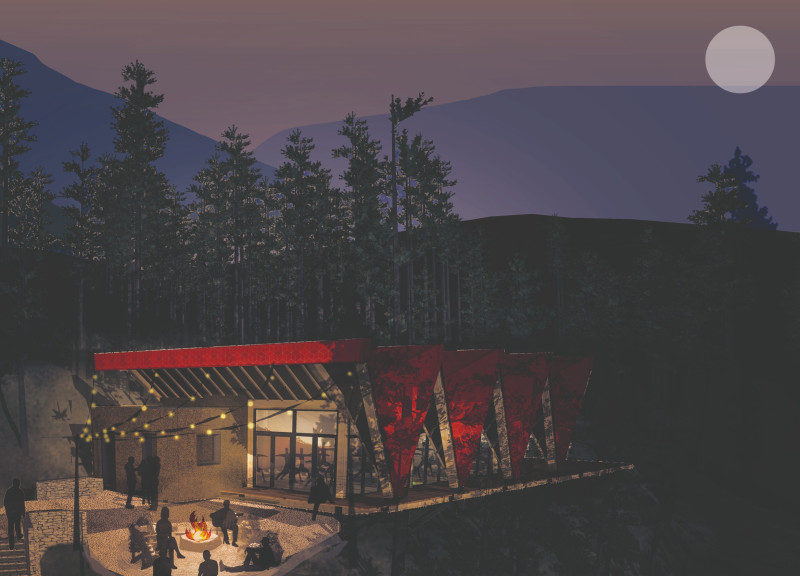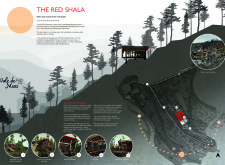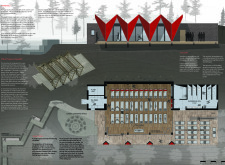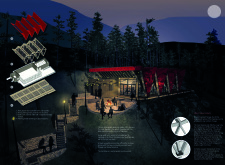5 key facts about this project
The building's primary function is to facilitate activities such as yoga and meditation, creating spaces where individuals can retreat from their daily routines. Key features of the project include a large yoga studio, communal areas, and contemplation gardens. The structure is oriented to maximize natural views, enhancing the overall experience for users.
One notable aspect of The Red Shala's design is its vibrant red roof. This element not only visually distinguishes the structure but also captures cultural significance, resonating with traditional Portuguese architecture. The roof's design incorporates a series of glulam beams, allowing for expansive interior spaces while supporting effective ventilation and natural light penetration. The building's layout fosters seamless movement between different functional areas, ensuring a flow that promotes interaction and solitude.
Sustainability is a core principle throughout the project. The use of materials such as natural cork for insulation and glulam beams for structural support demonstrates a commitment to environmentally responsible architecture. The inclusion of rainwater harvesting systems and solar panels further embodies a comprehensive approach to resource management. The relationship between the building and its environment is advanced through strategic landscaping, which includes terraced gardens that blur the lines between indoor and outdoor spaces.
The Red Shala employs passive ventilation techniques, optimizing the internal climate without reliance on mechanical systems. This focus on natural comfort aligns with the project's ethos of wellness. The expansive use of glazing in walls creates a visual connection with the landscape while allowing natural light to enter the interior, fulfilling both aesthetic and functional requirements.
For deeper insights into The Red Shala, including architectural plans, sections, and design rationale, readers are encouraged to explore the project presentation further. This examination will reveal the detailed architectural ideas and concepts that inform this unique design.


























